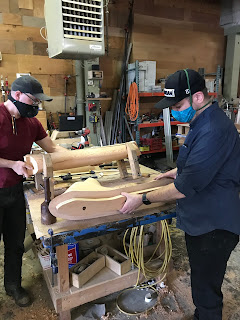Both the timber industry and the elk herd have been sources of discussion within the community. The conversation regarding the environmental impacts of clear cutting versus its potential to diversify the local ecosystem is in debate. Concurrently, the dialogue around the elk herd being a charming attraction as opposed to the wild life creating safety issues still stands strong. This sculpture positions itself as an unbiased piece of artwork, aiming to observe the challenging aspects of human’s relationship with nature, and to promote critical thinking towards the connection between preserving our planet and protecting a healthy economy.
The goal of the project is to bring residents and visitors together in hopes of more interaction and collaboration between each other and foster unity by showcasing varying ideologies within a community in a peaceful manner.
The blended form of an elk antler and a tree is 12-feet-high and marks Gearhart’s immersion into the Oregon Coast Public Art Trail. The Sweet Shop was identified in 2018 by members of the Clatsop County Arts Commission and volunteers working with the Oregon Coast Public Art Trail project as a potential site for a very visible piece of art.
Keri Rosebraugh was selected by Sweet Shop owner Traci Williams to design the project. “The minute they approached me to install a piece of work, I knew Keri would be perfect to create a meaningful addition to the town,” Williams said. “Not only have we been friends since fourth grade and collaborated on projects before, but I love her vision of art being a unifying force - something so important in this time and place.”
The artwork is constructed out of Douglas Fir, indigenous to Gearhart, and cast bronze. The natural texture of the wood symbolizes the sublime in nature while the bronze represents man’s hand in processing our natural resources. Above all, this piece honors unity and diversity in this region.
Companies Form 3D and Bamboo Revolution in Portland worked together to fabricate the wood portion of the sculpture while the bronze section was cast at Blue Mountain Fine Art in Baker City.
Trantler is graciously funded by the Oregon Coast Visitors Association and Travel Oregon. For more information on both organizations, please go to https://visittheoregoncoast.com/ and https://traveloregon.com/
For a link to the Sweet Shop Gearhart, click here: https://sweetshopgearhart.com/
Keri Rosebraugh's website link is http://www.kerirosebraugh.com/index.php



















































